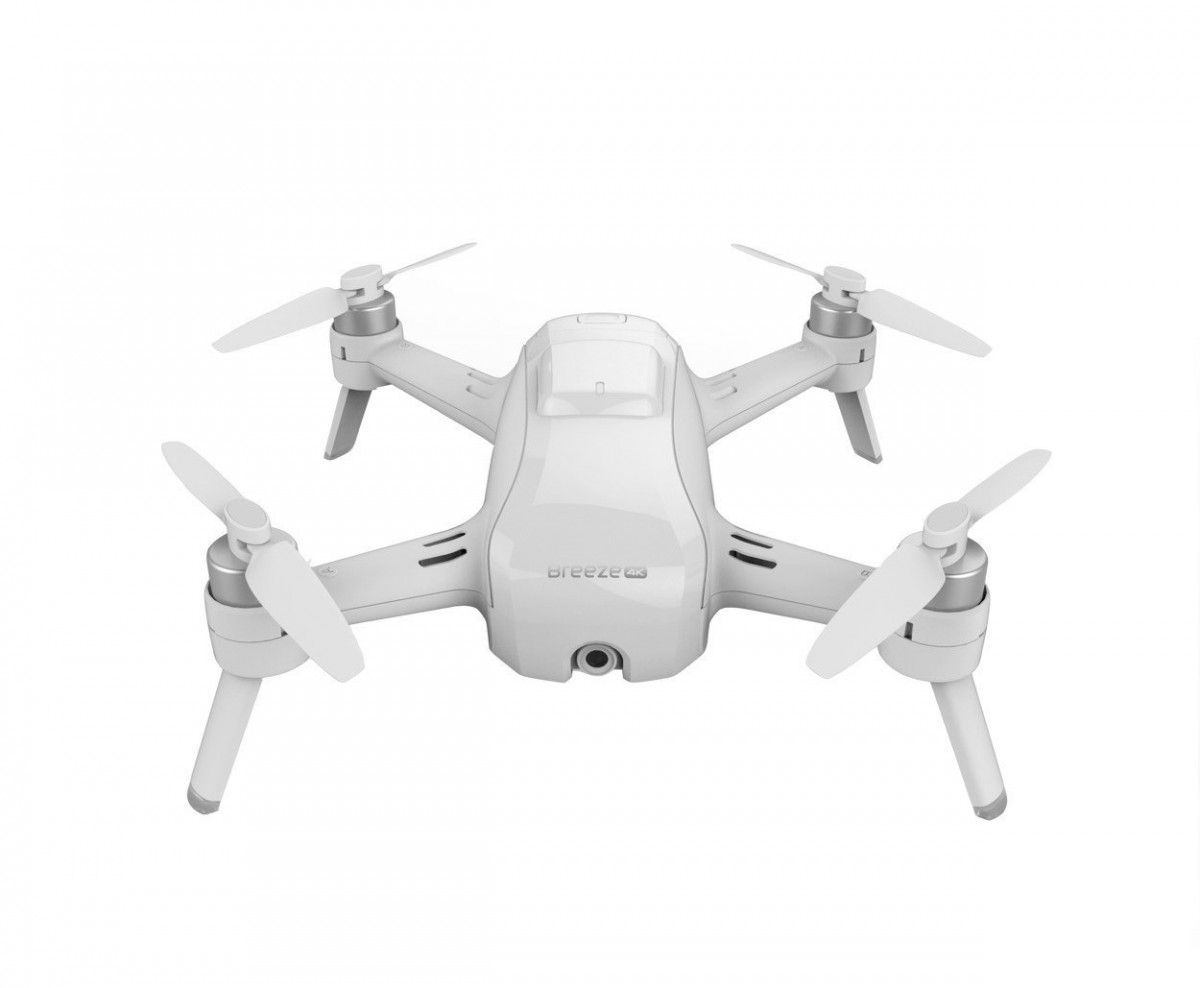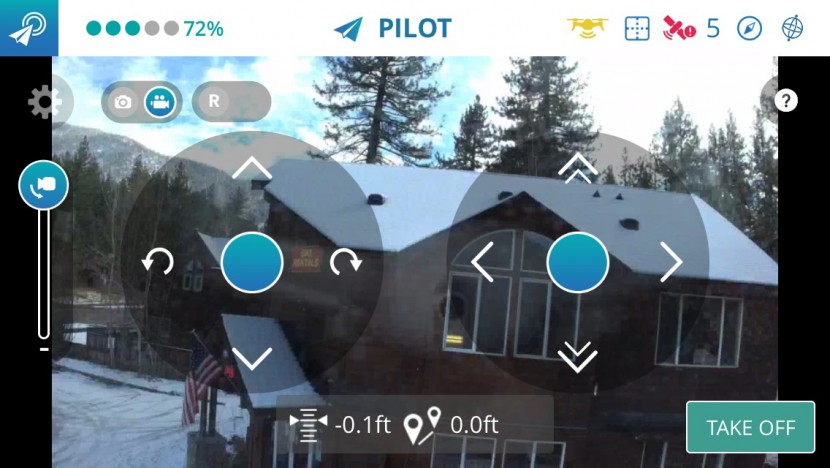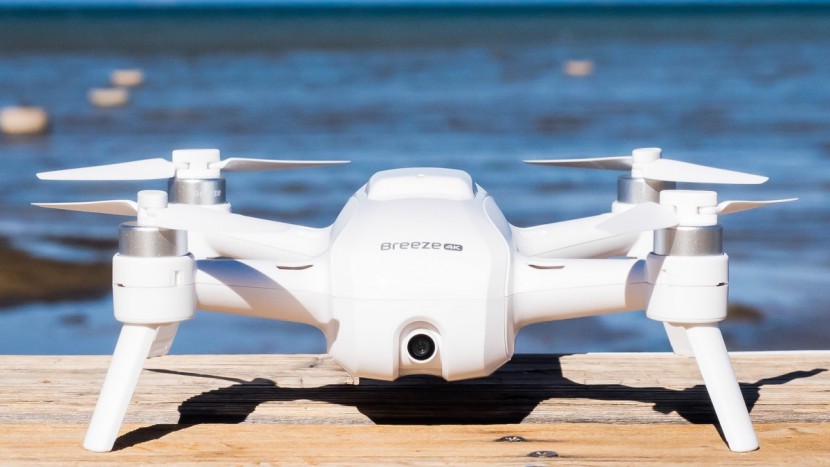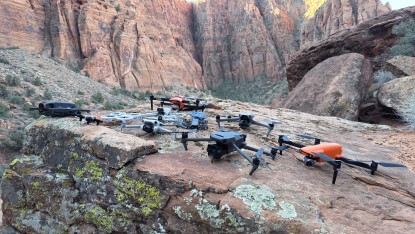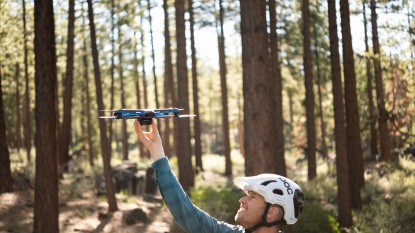YUNEEC Breeze 4K Review

Our Verdict
Our Analysis and Test Results
Compared to the DJI Spark, the YUNEEC Breeze is a good entry-level drone. The Spark is better than both in almost every way, but the Breeze holds its own for portability and capturing quick selfies.
Video Quality
The Breeze scored a 3 out of 10 in our video quality testing. However, it was far off from the top performing model, which scored a 10. Despite its 4K resolution, the tiny lens and sensor in the Breeze's camera produced footage that wasn't particularly crisp or clear in comparison to other models. The lack of a gimbal made this footage inevitable shaky. The footage had more of a first person in the cockpit feel to it, rather than the sweeping panning shots you'd want. Speaking of panning shots, the Breeze only has a range of 300 feet, which severely limits the scale of any shot you take. The only thing this drone did well was take still shots while hovering, while frees you to leave the selfie stick at home. This makes it a good option if your top concern is getting a coolest possible angle for your selfie, but it isn't very useful beyond that.
Ease of Use
The Breeze scored a 4 in our ease of use testing, putting it just above the bottom score of 3, but far off the top score of 9. Setup out of the box was slightly more of a hassle than some other models as calibration seemed to take a bit more turning and spinning, but once that was completed it was easy. The Breeze Cam app is well laid out with intuitive menus, but we just did not like the feel of the controls. The Breeze uses only a third party smartphone or tablet as a controller, so you fly with two virtual touchscreen joysticks. This provides no tactile feedback to the flying experience, and it is really easy to let your thumb drift off the “joystick” without even realizing it. This provides much less control than a dedicated controller but is adequate for maneuvering into position for a selfie.
First flight with the Breeze does feel quite breezy. Tapping a takeoff button within the app starts up the drone and brings it to a hover at about eye level. The touchscreen joysticks take some getting used to, but that process doesn't feel stressful as the copter itself is so small and likely to be undamaged in a crash. With the maximum range of 300 feet, it certainly feels like a toy you can't fly far away or lift too far off the ground. Landing is again accomplished with an onscreen button. Compared to the larger gimbal drones flying, this feels fun and carefree, and not nearly as serious.
Flight Performance
The Breeze earned a 5 in our flight performance testing. This score tied with its non-gimbal sibling but was the lowest score in this metric, well behind the top score of 9. It bobs and weaves a decent amount in takeoffs and landings. Due to its small size and correspondingly small consequence in the instance of a crash, this isn't particularly concerning or stressful. Hovering was similarly unstable, though it was able to hold position fairly well if the wind cooperated. Its lack of stability transferred to its autonomous flight functions. When executing its orbit point of interest and cable cam functions it bobbed and drifted a bit. We didn't have any issues testing its return to home function, but we'd like to remind you this function is only meant for when a problem inhibits you from piloting the drone back home yourself, and not as a way to end every flight. The Breeze has quite a short-lived battery, providing a maximum flight time of only 12 minutes. This problem is somewhat reduced by the fact that the Breeze is sold with two batteries, but you'll still have to land the copter and change the batteries if you want to keep flying.
Portability
Weighing in just under 1 pound, the Breeze was one of the most portable drones that we tested. It includes a hard plastic carrying case that easily fits into most backpacks and comes with two batteries, which each power approximately 12 minutes of flight time. Because you use your smartphone to control the drone the total package is very light and compact. The DJI Spark is comparably portable yet not nearly as much of a compromise in terms of camera quality and flight capabilities. If you don't care about camera quality want a budget drone that is super portable the YUNEEC Breeze is a good option to consider.
Value
The YUNEEC Breeze lists for $400. This feels very steep considering how much it feels like a toy and that the DJI Spark lists for $500 and is significantly better in every regard. Most retailers sell the Breeze for less than $200, which is more reasonable but still not a great value dollar for dollar.
Conclusion
The Breeze is a small, portable drone that can effectively function as a selfie machine or a really cool toy for a young kid, but its lack of stability, cheap camera, and mediocre flight performance make it unsuitable for capturing high-quality aerial footage.


